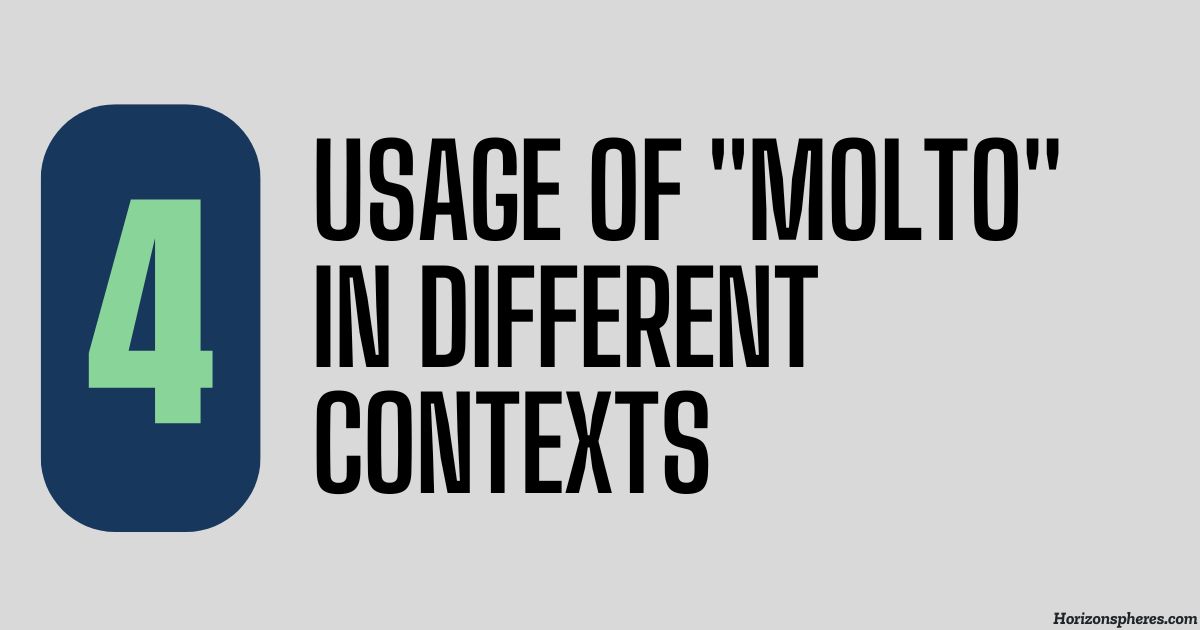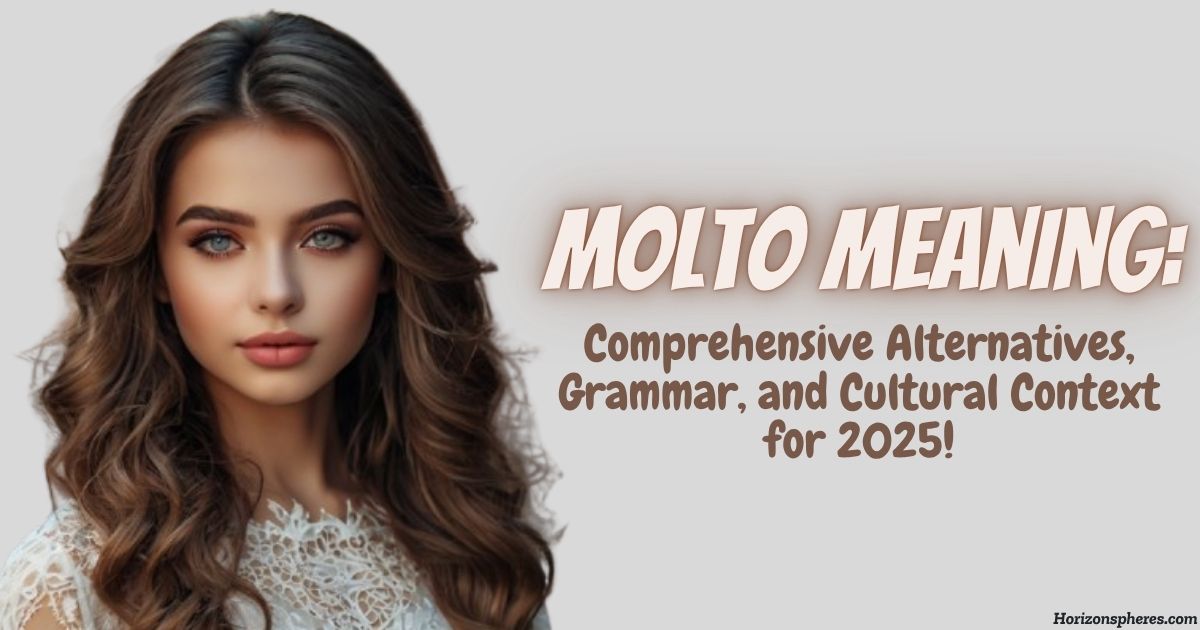Molto represents Italian’s most fascinating linguistic chameleon, extending far beyond simple translations like “very” or “much.” Unlike English “very,” which remains static, Italian Molto transforms based on grammatical function and accompanying words. This adaptability makes it simultaneously useful and challenging for English learners. Molto encompasses both quantity and intensity, functioning as an adjective or adverb depending on sentence structure.
What distinguishes Molto from other Romance languages is its dual nature – Spanish mucho focuses on quantities, French beaucoup emphasizes intensity, but Italian Molto brilliantly combines both functions. Understanding Molto pronunciation proves crucial – the distinctive double ‘l’ sound immediately signals authentic Italian competency to native speakers.
The Grammatical Shapeshifter
Molto’s remarkable ability to morph and adapt across different grammatical contexts sets it apart from rigid English intensifiers. This transformative quality allows it to seamlessly transition between describing quantities of objects and intensifying emotional expressions.
Cultural Linguistic Bridge
Beyond mere vocabulary, Molto serves as a cultural ambassador, carrying centuries of Italian heritage and connecting modern speakers to their classical Latin roots while maintaining contemporary relevance in everyday communication.
Etymology and Basic Meaning

Molto evolved from Latin multum meaning “much” or “many,” directly connecting modern Italian to its classical roots. This ancient foundation explains why molto functions differently from English “very” – it’s not just a translation but a linguistic descendant with a distinct personality shaped by centuries of development.
The Roman Empire spread Latin across Europe, with Italian molto retaining strong connections to original Latin structure. Today, Italian speakers unconsciously honor this heritage by choosing molto in formal or culturally sensitive contexts, bridging ancient Rome with modern Italy across two millennia of linguistic tradition.
Variations Based on Gender and Number
Here’s where molto reveals its distinctly Italian personality and where most English speakers encounter their first real challenge. The gender and number agreement system creates four distinct forms that must precisely match their accompanying nouns – a grammatical concept that simply doesn’t exist in English.
The four variations create an intricate grammatical dance:
- Masculine singular: molto (molto pane – much bread)
- Feminine singular: molta (molta acqua – much water)
- Masculine plural: molti (molti libri – many books)
- Feminine plural: molte (molte persone – many people)
This grammatical complexity serves important communicative functions beyond mere rule-following. The agreement system creates rhythm and flow in Italian speech that contributes to the language’s musical quality. When molto matches its noun perfectly, the sentence achieves a harmonious balance that native speakers find aesthetically pleasing and linguistically satisfying.
Regional variations add another layer of complexity to gender and number agreement. Northern Italian speakers might emphasize these agreements differently than southern speakers, creating subtle pronunciation differences that reveal geographical origins.
Usage of “Molto” in Different Contexts

1. Expressing Quantity
Molto excels at describing abundance, but its effectiveness depends entirely on understanding contextual nuances that native speakers navigate intuitively. The molto meaning in Italian shifts subtly based on whether you’re discussing countable versus uncountable nouns, formal versus informal situations, and regional communication preferences.
In business contexts, molto maintains dignity and precision that more casual alternatives cannot match. Professional Italian communication favors molto over colloquial phrases like “un sacco di” because it conveys measured assessment rather than emotional enthusiasm. Academic writing similarly embraces molto for its scholarly tone and grammatical precision.
2. Intensifying Adjectives or Adverbs
When molto functions as an adverb, it transforms ordinary descriptions into emphatic statements that carry emotional weight far beyond simple intensification. Consider the phrase “Lei è molto intelligente” – while English speakers might translate this as “She is very intelligent,” the Italian version carries implications of genuine admiration, respect, and perhaps even surprise at the level of intelligence observed.
Molto pronunciation becomes particularly crucial in adverbial usage because emphasis changes meaning dramatically. A stressed molto suggests surprise, strong emotion, or emphatic disagreement, while casual molto simply intensifies description without dramatic overtones.
3. Musical Terminology
The molto meaning music applications have spread Italian language influence worldwide, creating universal musical terminology that transcends cultural and linguistic boundaries. Classical music borrowed molto directly from Italian to modify tempo and expression markings, establishing a global standard that musicians of all nationalities recognize and use.
Molto allegro means extremely fast, but it’s not just about speed – it carries implications of joyful energy and spirited performance that mechanical tempo measurements can’t capture. Similarly, molto adagio indicates very slow, but with connotations of deep contemplation, emotional weight, or ceremonial dignity.
4. Emphasizing Feelings or States
Emotional expression through molto carries distinctive cultural weight that reflects Italian approaches to sharing feelings and personal states. “Sono molto felice” demonstrates this cultural difference perfectly. While English speakers might translate this as “I am very happy,” the Italian version suggests controlled joy, measured satisfaction, or happiness that’s been carefully considered rather than spontaneous excitement.
More Post: WYF Meaning: The Ultimate 2025 Guide That Will Transform Your Digital Communication Skills
Alternatives to “Molto”
Understanding alternatives to molto transforms basic Italian language skills into sophisticated communication that demonstrates cultural awareness and linguistic flexibility. Each alternative carries distinct meanings, formality levels, and contextual requirements.
1. Tanto
Tanto operates as molto’s casual, approachable cousin, offering similar meaning with a more relaxed communication tone. “Ho tanto da fare oggi” flows more naturally in casual conversation than “Ho molto da fare oggi.” This alternative works particularly well in emotional expression where tanto sounds more intimate and personal than molto.
2. Troppo
Troppo signals excess and inappropriate amounts, carrying judgment that molto carefully avoids. Unlike molto, which maintains neutral description, troppo indicates that limits have been exceeded. “Hai mangiato troppo” isn’t just “you ate a lot” but “you ate too much,” with implications of poor judgment.
3. Assai
Assai brings literary elegance and classical dignity to modern Italian conversation, carrying echoes of Italy’s rich literary heritage. This formal alternative appears frequently in classical texts but works beautifully in contemporary Italian expressions when sophistication is desired without pretension.
4. Estremamente
Estremamente elevates any conversation to sophisticated, professional levels that molto cannot quite achieve. “È estremamente importante” carries more weight and urgency than “È molto importante,” demonstrating how lexical choice affects perceived seriousness.
5. Notevolmente
Notevolmente highlights significant changes, improvements, or differences that Molto cannot adequately express. “La qualità è notevolmente migliorata” emphasizes substantial improvement that goes beyond incremental change.
6. Un sacco di
Un sacco di represents authentic street-smart Italian that immediately signals conversational fluency and cultural insider knowledge. This colloquial phrase literally means “a sack of” but functions like “tons of” in English, perfect for casual quantity descriptions.
7. Un mucchio di
Un mucchio di offers similar informality to “un sacco di” but with slightly different connotations. Think “a bunch of” – it’s friendly and approachable without the slight edge that “un sacco di” sometimes carries.
8. Una marea di
Una marea di creates vivid imagery through metaphor that Molto simply cannot match. Literally meaning “a tide of,” this expression emphasizes overwhelming amounts that require poetic language to describe adequately.
9. Un’infinità di
Un’infinità di ventures into poetic territory, suggesting uncountable abundance that transcends normal measurement. “C’erano un’infinità di stelle” creates romantic imagery that molto cannot achieve.
10. Parecchio
Parecchio occupies valuable middle ground between “some” and “a lot,” offering diplomatic precision that molto sometimes lacks. It suggests more than “poco” (little) but less than molto.
11. Tantissimo
Tantissimo represents the superlative extreme of emphasis, cranking intensity to maximum levels. “Ti amo tantissimo” carries a passionate intensity that “Ti amo molto” simply cannot match.
Frequently Asked Questions
Is Molto Spanish or Italian?
Molto is distinctly and exclusively Italian, though it shares fascinating Latin roots with Spanish mucho. Italian molto demonstrates remarkable versatility by functioning as both adjective and adverb, while Spanish mucho operates primarily as an adjective describing quantities of nouns.
What does a molto mean in music?
The molto meaning music applications have created universal musical terminology. Molto allegro means very fast with connotations of joyful energy, while molto adagio indicates very slow with implications of deep contemplation.
What does the Italian phrase “molto bene” mean?
“Molto bene” translates to “very well” or “very good” but carries additional cultural weight and contextual significance. This phrase expresses satisfaction, approval, acknowledgment, or encouragement that varies dramatically based on situational context.
What is molto grazie?
“Molto grazie” represents a common mistake. The correct phrases are “molte grazie” (many thanks) or “grazie molto” (thank you very much), depending on intended grammatical function.
What does molto bella mean?
“Molto bella” means “very beautiful” when describing feminine subjects, with molto functioning as an adverb intensifying “bella” (beautiful). This phrase appears frequently in Italian compliments and emotional expressions.
Conclusion
Understanding molto opens doors to authentic Italian communication beyond basic translation. This word encompasses more than English “very” – it’s a sophisticated tool adapting to countless contexts with intricate grammar patterns. The molto device transforms basic vocabulary into nuanced communication honoring Italy’s cultural heritage.
Italian rewards precision over casual enthusiasm. Choose intensifiers thoughtfully, respect grammar agreements, and embrace rich cultural contexts. Molto bene – you’re equipped for authentic Italian communication.










